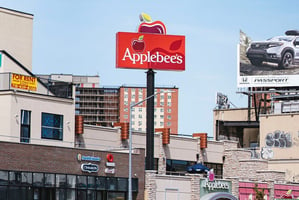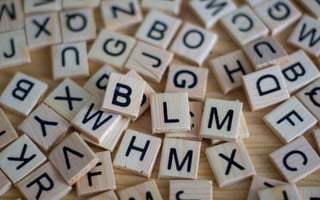Imagine the scene.
A weather bulletin may seem like an unlikely starting point for a media training blog.
But a recent one contained a brilliant example of how spokespeople should use numbers in media interviews.
The presenter showed a photograph of giant waves caused by Storm Noa that swept across the UK last week.
And he said: “The waves were thought to be eight metres high – that’s about the size of two double-decker busses.”
That’s a great way to make numbers memorable and meaningful.
Had he left the measurement as eight metres, many watching would have struggled to visualise the size.
But we can all picture the size of two double-decker buses.
Busses are one of the most popular ad-hoc measuring systems favoured by journalists.
Earlier this year, there were warnings an asteroid “about the size of a double-decker bus” would narrowly pass Earth.
A few years ago, a giant ‘fatberg’ removed from the London sewers was described as “bus-sized”.
Olympic swimming pools are also regularly used as a barometer of size. Another asteroid - that could reportedly hit our planet in 2046 - is reported to be the size of an Olympic swimming pool.
A newly discovered asteroid roughly the size of an Olympic swimming pool has a "small chance" of colliding with Earth in the future, with a potential impact on Valentine's Day in 2046 https://t.co/Q8ypaKtgLY
— CNN (@CNN) March 9, 2023
Another ‘go to’ unit of measurement is a football pitch.
When China unveiled the world’s most powerful wind turbine earlier this year, the Daily Mail reported it was the “size of seven football pitches”.
Meanwhile, the Yorkshire Post measured the size of a proposed solar farm as “900 football pitches.”
Sticking with the football theme, Wembley Stadium is a favoured capacity measurement. Late last year, for example, it was reported one of HS2’s main contractors had moved enough earth to “fill Wembley Stadium four times over.”
Around the same time, a new “flood storage reservoir” in the Fens was described as being able to hold “enough water to fill Wembley Stadium 22 times”.
If the media isn’t using buses to measure height, Nelson’s Column, the Eifel Tower, and Big Ben tend to offer other handy guides.
When a giant win turbine in Wales collapsed under powerful winds, it was reported to be “almost twice the height of Nelson’s Column.”
Proposals to build floating wind turbines in a Welsh port have been described as being the “size of the Eifel Tower”.
And speaking of Wales, “about the size of Wales” is another in-demand measurement. It has been used to describe everything from the size of icebergs to the scale of deforestation, and the amount of damage a nuclear bomb could cause.
Belgium is another country that often finds itself used as a unit of measurement. European wildfires last summer were described as burning “an area a fifth of the size of Belgium.”
So, what does this mean for media spokespeople? How can you make the numbers you use count?
We are often asked about numbers and statistics and how to use them during our media training courses.
And they can be a powerful tool for spokespeople to use to support their message.
But audiences can struggle to visualise and understand numbers in isolation.
Remember, I mentioned the amount of earth moved by an HS2 contractor and the Wembley Stadium comparison.
The actual number the story is based on is 15 million cubic metres of earth – or 15,386,423m3.
That sounds like an impressive figure. But, without the comparison, it is pretty meaningless.
The asteroid that could hit on Valentine’s Day 2046 – surely making the earth move – is described as measuring 50m in diameter. Again, can we picture the size without the swimming pool comparison?
I mentioned that “the size of Wales” is a much-used measurement. Such is its popularity that a conservation charity aiming to tackle deforestation chose Size of Wales as its name.
Its director Elspeth Jones was quoted in a BBC article a few years ago saying: “When you tell people that roughly 12 million hectares of tropical forest is destroyed each year, the sheer scale of that doesn't register.
"When you realise that is an area of tropical forest roughly six times the size of Wales, you can start to picture the scale of the forests and of the problem."
And that sums it up perfectly. It is why we tell our media training delegates that if you introduce a figure in your next media interview, follow it with a phrase like “that’s the equivalent of” or “to put that number in context” and use something relatable to make it memorable.
To give you another idea, the number of times something could wrap around the world tends to stand out. For example, a report claimed recently that Amazon’s packaging waste could wrap around the world 800 times. And Australian researchers say the amount of fishing line lost at sea each year could encircle the planet 18 times.
What else do you need to know about using numbers in media interviews?
Well, another tip is to restrict your interviews to a couple of statistics to illustrate your message.
We often see spokespeople try to shoehorn as many figures as possible into the interview. It overwhelms the audience and creates a numerical blur. Less is more with numbers.
If you want to use percentages, make them simple and impactful. For example, more than a quarter sounds much better than 27 per cent.
Or, instead of 13 per cent, you could talk about “around one in eight of us”.
Oh, and if you are not sure about the size of Wales, it is about the equivalent of two million rugby pitches.
Media First are media and communications training specialists with more than 35 years of experience. We have a team of trainers, each with decades of experience working as journalists, presenters, communications coaches and media trainers.
Click here to find out more about our media training




